The second tools on Tuesdays post is looking at needles. I've been weaving in the ends of my Esmée Cardigan #2 and sewing on buttons, and I have really appreciated having a decent needles to do this. Unlike scissors, where you can stretch and snap the yarn with your fingers, it's much more difficult to weave in ends without a needle.
These are my needles:

You can tell by the arrangement of my needle case that I am not very organised. There are meant to be four pieces of felt or pages that you can turn over, but my needles go all the way through and stick them all together. They have been accumulated over the years from various sources - given to me by my Grannie one Christmas (along with the scissors showcased last week), borrowed from my Mum's sewing kit, and inherited from my other Grannie. Until Christmas, they were stored in a slightly tatty 'Singer' sewing case, which I inherited/claimed from my Grannie (I think my Mum might have wanted it, but I spotted that there were some good tapestry needles in it, and it was light and compact, so used it, and then ended up being tidied away with my stitching stash and taken to university). However, for Christmas, my Mum gave me this lovely little sewing case in my stocking.
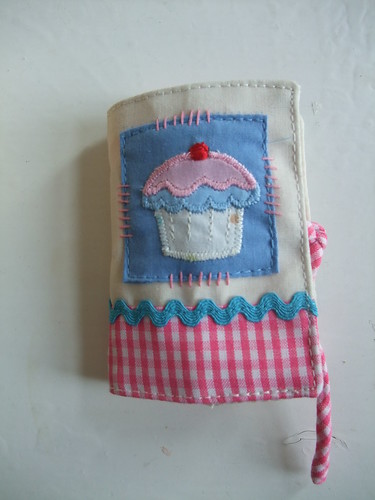
As you can tell from the stains that have already accumulated on the front of the case, I take this needle case with me everywhere I take my knitting/crocheting projects. You never know when you might want to sew in a stray piece of yarn, or if, unconnected to your project, someone's button breaks off or their bag rips and they're in need of a sewing needle.
I have now finished some projects, so this blog should get a few more updates over the next week or so. (One is photographed, the other is not).
Tuesday, 26 April 2011
Tools on Tuesdays (2- Needles)
Posted by Sarah Francis at 17:44 2 thoughts
Labels: tools
Tuesday, 19 April 2011
Tools on Tuesdays (1- Scissors)
The title suggests that this will be a regular feature. I'm not sure if it will (I have two posts planned at the moment), but as a title then it has good alliteration and rhythm, so I'm keeping it that way.
Tools, the objects that we use to create crafts, are often overlooked. I have a tendency to imagine everyone crocheting with exactly the same crochet hooks that I have, cutting the yarn with the same scissors, using the same needles etc. Obviously that's not right, so this post is just to highlight what I personally use as my tools - feel free to post your own version in the comments or on your own blog. Also, I find that the tools I use have much more interesting stories behind them than the yarn that I buy or the patterns I use.
I'm starting with scissors, partly because I started reusing some lovely scissors that my Grannie gave me, partly because they're quite useful and universal.
These are the scissors that I am using at the moment:

As I wrote above, these were given to me by my Grannie (my Dad's mother). It was probably about 5 or 6 years ago, before I was into crochet. I enjoyed cross-stitching and sewing, and I had asked for a sewing box and some embroidery thread for Christmas. My Grannie included with the sewing box this pair of scissors. I rediscovered them last weekend when I was reorganizing my yarn to take it back to uni.
Usually, I use nail scissors to cut my yarn as I find normal sized scissors too large and unwieldy. This pair of scissors are the same size but a little sharper, and a little more precise.
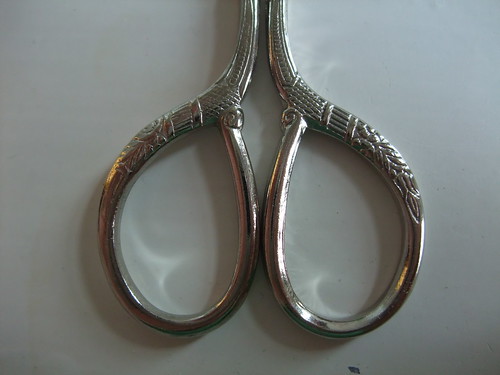
I really like the design on the handles The curl where the ring joins the shaft (I think I've just made up those words...) really reminds me of Anglo-Saxon/Scandinavian metalwork - I half expect the blades to be carved in the shape of a bird's head.
Posted by Sarah Francis at 14:25 0 thoughts
Labels: tools
Thursday, 14 April 2011
York
My Mum and I went to York last weekend. It was lovely - really sunny, so much history. We were able to spend the whole weekend going to 'medieval' sites: York Minster, Jorvik, Micklegate Bar, Barley Hall, the Yorkshire Museum, Clifford's Tower, the York Castle Museum. I was really impressed by the high standard of the museums - nearly all were recently renovated or renewed, with passionate staff and informative, sensible displays.
I was also able to buy some Yorkshire wool in a grey colour, which will hopefully make a summer birthday gift for my brother. His favourite colour is 'sludge', but he will wear grey as well.
In the meantime, I'm remaking my Esmée cardigan for me, and am recording my progress on Ravelry.
Here are some pictures:
York Minster:
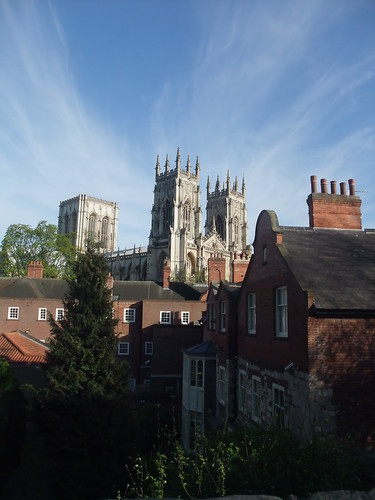
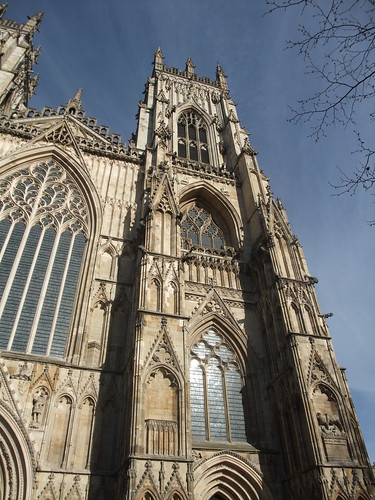
Ruins of St Mary's Abbey:
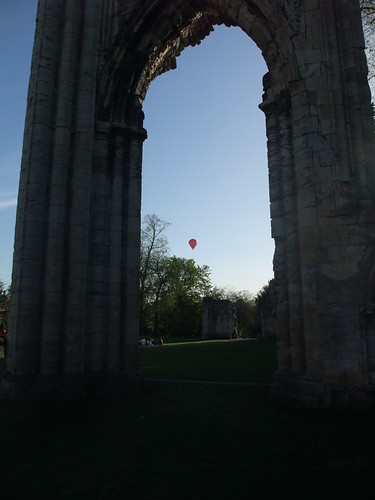
River Ouse:
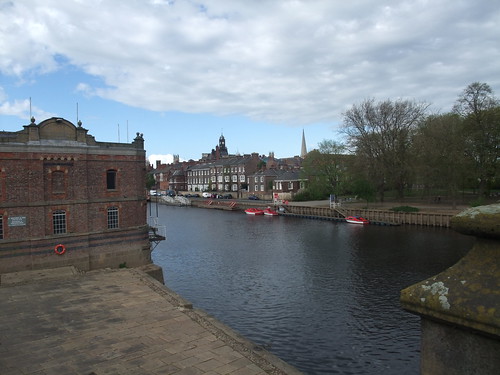
Posted by Sarah Francis at 22:48 0 thoughts
Sunday, 3 April 2011
The Aphra Collection
The Aphra Collection available as a free pdf download from Ravelry (clicking will download pattern) contains instructions for a hat pattern (with further instructions for optional colourwork striping) and a cowl pattern, which use purl bumps to create interest. They're very simple - just knit and purl, and all they require are counting to get the right pattern.
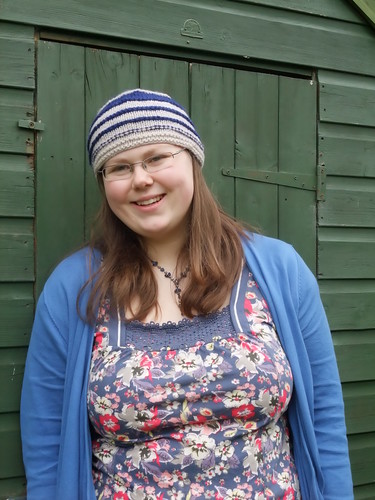
Striped Hat

Plain Hat and Cowl
Normally, I publish my patterns on the blog, but this time, I thought that with my first knit patterns that I would stretch my wings and try putting up a pdf on Ravelry. If you want to make only the cowl then you can download that page of the pdf separately. (clicking will download pattern)
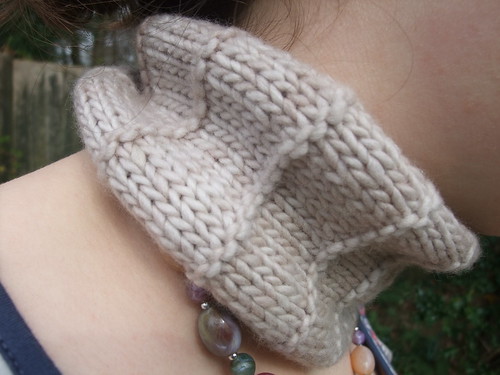
Cowl
This is the pattern which came out of this inspiration post. Very different from damask and porcelain. The porcelain came from the colours - the white of the Malabrigo Merino Worsted in Simply Taupe and the dark blue of the madelinetosh eyre in Fathom, the damask from the person that I was designing for. But I couldn't get my damask charts to work properly - it would work on a larger canvas, but not a hat. I've been really inspired by the work of Cecily Glowik MacDonald - the real (or at least, perceived) simplicity of her patterns. So I wondered, what I can do with just knit and purl?
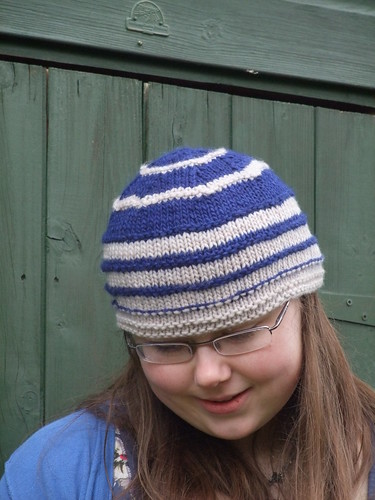
The Aphra collection was what I produced. I love counting and internal logic, so in this case, the distance between the row of purl bumps increases by one each time. In the case of the Striped Hat, there is a switch from white being the majority colour at the bottom, to blue at the top.
Aphra Hat: 
Aphra Cowl: 









